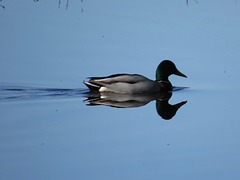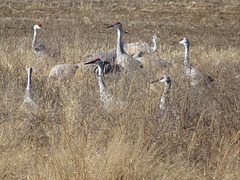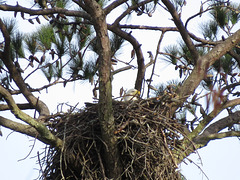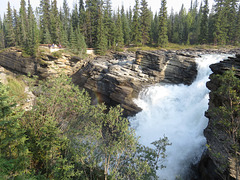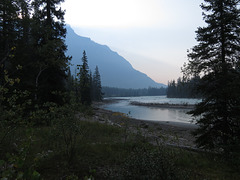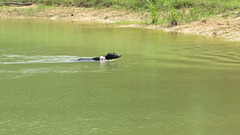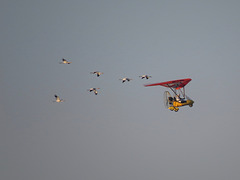Ronald Losure's photos
Mallard duck
| |
|
|
|
Sandhill cranes
| |
|
|
|
Bald eagle on nest
| |
|
|
|
The bald eagles at Noxubee National Wildlife Refuge have started incubating their eggs. I watched this one for a half hour, and this was the highest it raised its head.
Cormorant on Bluff Lake
| |
|
|
|
Athabasca Falls, Alberta
| |
|
|
|
Athabasca Falls, Alberta
| |
|
|
|
Athabasca River, Alberta
| |
|
|
|
Athabasca River
| |
|
|
|
Garip & Branco playing in the pond
Sunwapta Falls, Alberta
| |
|
|
|
Sunwapta River, Alberta
| |
|
|
|
Wild animal bridge over highway
| |
|
|
|
There are several of these bridges over the Trans-Canada Highway in Banff National Park. They allow wild animals to cross the highway safely.
Here is an excerpt from a Wikipedia article ( en.wikipedia.org/wiki/Wildlife_crossing ) about these structures:
Using a variety of techniques to monitor the crossings over the last 25 years, scientists report that 10 species of large mammals (including deer, elk, black bear, grizzly bear, mountain lion, wolf, moose, and coyote) have used the 24 crossings in Banff a total of 84,000 times as of January 2007 (Clevenger 2007). The research also identified a "learning curve" such that animals need time to acclimate to the structures before they feel comfortable using them. For example, grizzly bear crossings increased from seven in 1996 to more than 100 in 2006, although the actual number of individual bears using the structures remained constant over this time at between 2 and 4 bears (Parks Canada, unpublished results). A similar set of observations was made for wolves, with crossings increasing from two to approximately 140 over the same 10-year period. However, in this case the actual number of wolves in the packs using the crossings increased dramatically, from a low of two up to a high of over 20 individuals. In continuation with these positive results, Clevenger et al. (2001) reported that the use of wildlife crossings and fencing reduced traffic-induced mortality of large ungulates on the TCH by more than 80 percent. Recent analysis for carnivores showed results were not as positive however, with bear mortality increasing by an average of 116 percent in direct parallel to an equal doubling of traffic volumes on the highway, clearly showing no effect of fencing to reduce bear mortality
Cranes (mostly)
| |
|
|
|
Two whooping cranes, many sandhill cranes, and various ducks. Wheeler National Wildlife Refuge, Alabama. January 2016.
Whooping cranes behind an airplane
| |
|
|
|
December 2015. An organization called "Operation Migration" tried for several years to train endangered whooping cranes to fly behind ultralight aircraft. The plan was to show them the way from their birthplace in Wisconsin to wintering areas in Florida. This photo shows their last, unsuccesful day of flying. The birds refused to fly further south. They were taken in crates to a nearby location in Alabama. Eventually, they met other cranes who knew about appropriate places to spend the winter.
Now, these and a few other whooping cranes, spend the winter in Wheeler National Wildlife Refuge in northern Alabama.
Schlumbergera sp. in bloom
Hooded mergansers on my pond
Hair Ice 3
| |
|
|
|
These are very fine crystals of ice that form on dead or rotting plants at temperatures slightly below freezing. These photos were taken very near my pond on a clear morning. The Wikipedia article says they are mostly found between latitudes 45 and 55 degrees north, but these are located at latitude 33 north. en.wikipedia.org/wiki/Hair_ice
Hair Ice 2
| |
|
|
These are very fine crystals of ice that form on dead or rotting plants at temperatures slightly below freezing. These photos were taken very near my pond on a clear morning. The Wikipedia article says they are mostly found between latitudes 45 and 55 degrees north, but these are located at latitude 33 north. en.wikipedia.org/wiki/Hair_ice

